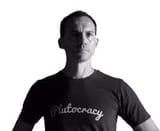GAME ART: THE RUSSIANS PWNED THE 17TH BIENNALE OF ARCHITECTURE (MAY 22 - NOVEMBER 21 2021, VENICE, ITALY AND ONLINE)
In case you are wondering - I know you are - the answer is yes, Open—Russian Federation Pavilion is, by far, the greatest thing that ever graced the Venice Biennial of Architecture (May 22 - November 21 2021), which will end its majestic run in just a few weeks - game over is expected in less than a month from today, so you still have some time. A penetrating examination of the artistic, cultural and social role played by video games and digital environments in our society, the Russian Pavillion features not one, not two, but three outstanding artworks, specifically:Sanatorium Anthropocene Retreat, a post-apocalyptic rendering of the Pavilion building itself, by artist Mikhail Maximov (don't miss the related Let's Play).
The game is set in a post-apocalyptic scenario: awaking to a deserted Russian Pavilion in Giardini, the game stages a fantasy-like performance in which the main character (the player) mutates between human and non-human entities – a robot, a virus, and a humanoid – navigating a derelict digital environment and trying to recollect what has happened.
Its Winter, 2019, a hauntological, first-player simulation of a post-Soviet suburban residential tower block during winter. This amazing sandbox game was developed by Moscow-based poet and musician Ilia Mazo and developer Alexandr Ignatov (aka sad3d).
Yuha’s Nightmares from Yuliya Kozhemyako (aka Supr). A simulation game about the nightmares that are tormenting the main character, Yuha, the virtual doppelganger of the game designer. This interactive dream disguised as a video game is set in a surreal world full of strange things and unexpected events. The deeper part of Yua's consciousness is depicted through the "flip side" of the 3D world. The player is frequently stuck in textures, sees through mesh and wanders around at every level in «inappropriate» places. The glitches in the game are accordingly integrated to make for an intense and inusual experience.
For the past several months, the Russians also delivered an overwhelming amount of juicy video content, which is freely available on a variety of video streaming platforms including Vimeo, featuring, among other: Federico Campagna with Ilia Mazo, Paolo Pedercini aka Molleindustria, Keiken, and many more as part of their digital takes (DTO) program. There's enough material for three PhD dissertations, seriously.Another highlight is Into the Sandbox, a three-part film program curated by Vladimir Nadein for Open exploring the interconnections between cinema, digital gaming worlds, virtual landscapes, and gamification, featuring modern masterpieces likeSwatted (2018) by Ismaël Joffroy Chandoutis, How to Disappear (2020) by Total Refusal, Hotel (2014) by Benjamin Nuel, My Own Landscapes (2020) by Antoine Chapon, The Letters About the End of the World (2021) by Dina Karaman, FeatherFall (2020) by Total Refusal, Swamp City (2021) by Alice Bucknell, AIDOL (2019) by Lawrence Lek, Feel My Metaverse (2019) by Keiken + George Jasper Stone.
The 2021 Russian Pavilion is commissioned by Teresa Iarocci Mavica, director of the V-A-C Foundation; curated by Ippolito Pestellini Laparelli in collaboration with curator’s team (Erica Petrillo, Giacomo Ardesio, Vladimir Nadein, Liza Dorrer, and Dasha Nasonova) and managed by Anastasia Karneeva of Smart Art.
Final score: A sheer display of Game Art super-power. A new benchmark. Actually, no: a brand new paradigm.LINK:
Open_Russian Pavillion at the 17th Biennale of Architecture in Venice
All images courtesy of The Russian Pavillion, photos by Marco Cappelletti